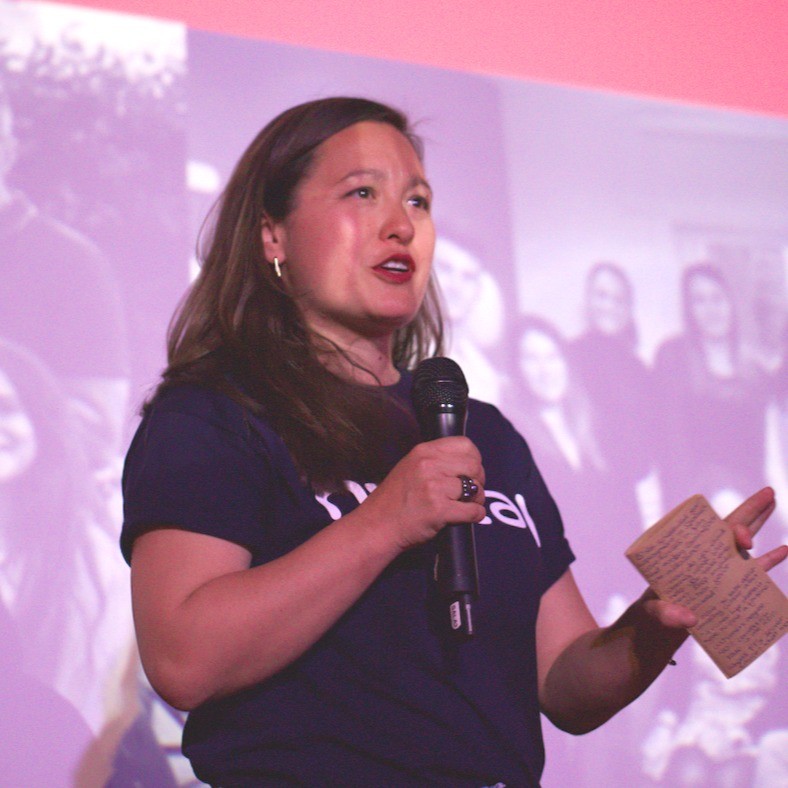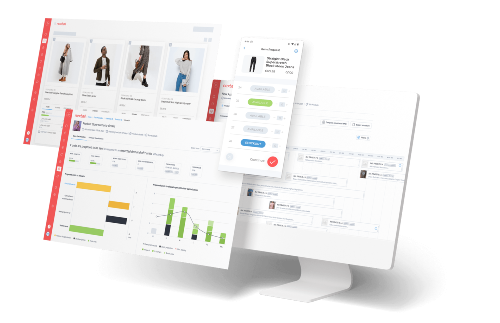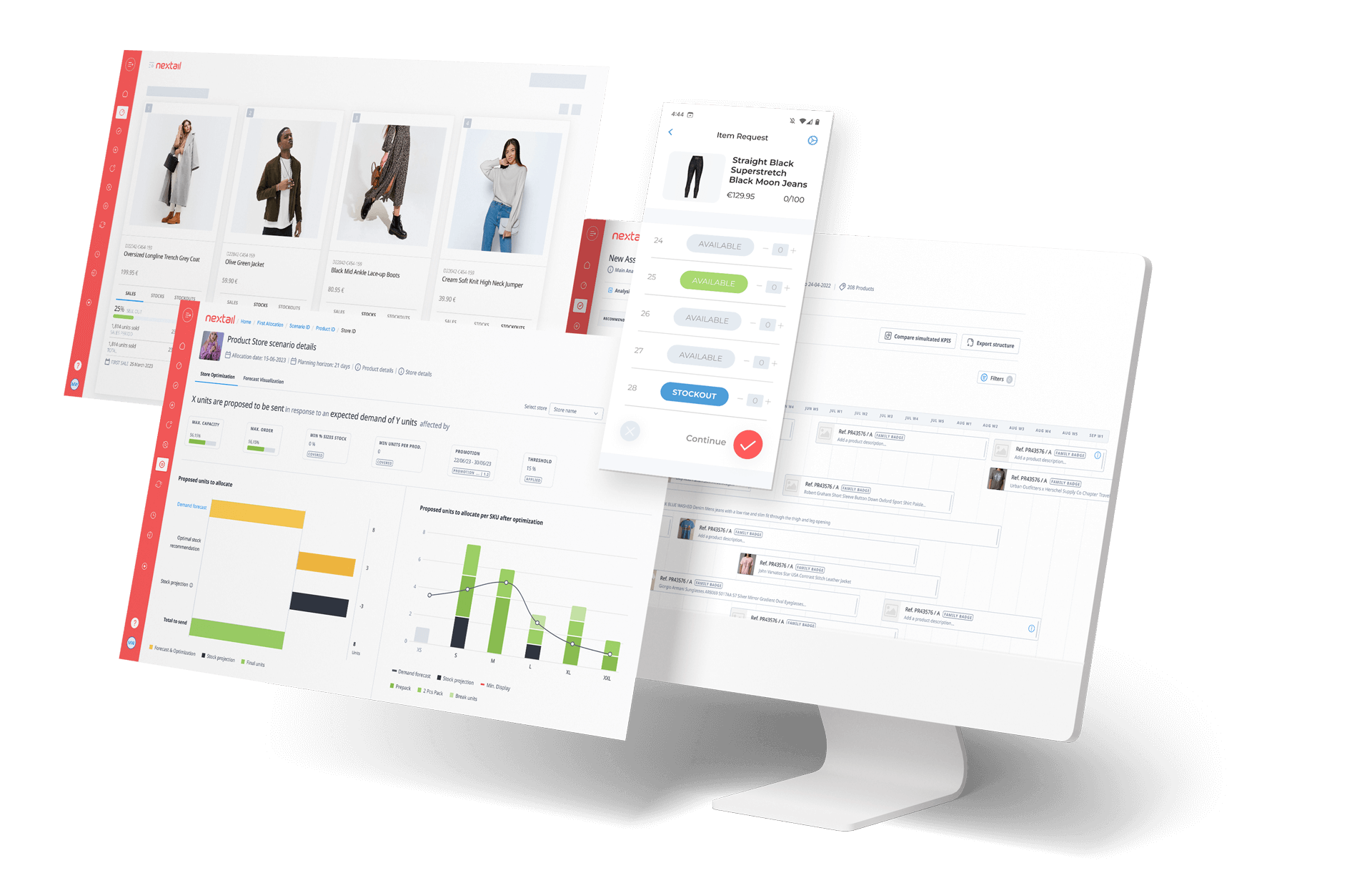Finding the right balance: Maximizing retail headcount and technology in fashion
With 20+ years of leadership experience in fashion, James Mooney stands as a distinguished retail expert and strategic advisor, having worked within top UK and European brands such as Topshop, Topman, Pimkie, Primark and River Island.
Learn how Danish variety retailer Flying Tiger Copenhagen is using Nextail AI merchandise planning technology to meet customer demand profitably across 800+ stores.
Inflation, rising interest rates, increasing operational complexity, and the next major crisis seemingly lurking just around the corner. These challenges are causing fashion margins and working capital to be pinched from all sides and that’s not going to change in the short term.
So, for many fashion retailers, top of mind is striking the right assortment balance that cuts costs, turns quicker, yet remains customer-centric. And to do so, they’re trying to find the right balance between retail headcount and technology.
We asked James to share insights from conversations he has with fashion retailers each day when asked to audit their merchandising processes, including how they are maximizing teams and technology to mitigate ongoing challenges.
Insight #1: Major changes in merchandising roles
What major changes are you seeing in merchandising roles and how are they affecting teams?
The role of merchandising has fundamentally changed – new channels, fulfillment options, product lines, store footprints; yet the way merchandising is approached hasn’t. Complexity is often met with extra columns on a spreadsheet. And nowhere is the pain of completing those spreadsheets more felt, than amongst those just starting out on their fashion journey.
In a recent roundtable I hosted, the common theme across retailers was that B&M roles have become less exciting and indeed more boring, mundane and repetitive where a lot of time is spent inputting data into spreadsheets or using legacy systems making turnover rates of fashion talent very high.
One UK retailer mentioned that they have a team of 40 Buying Admin Assistants spending 75% of their time raising POs even though they have an entirely separate PO raising team.
Exacerbating that fact is that increased remote work has removed the more dynamic, social, and “runway” aspect of the job which used to be a major draw of working in the industry. Expectations of graduates aren’t matched by the experience of the role. Unlike 20 years ago when they were able to look at products and spend more time in stores, new merchandising entrants are getting stuck in data spreadsheets and grunt work which greatly differs from what they’d imagined their careers to look like.
Some fashion companies are recognizing this and are automating these tedious and repetitive tasks and making these roles more appealing, ensuring engagement and reducing turnover. For example, a major UK retailer that was a pioneer in introducing AI for merchandise planning tells me they are better able to retain fashion talent because their work is more interesting, the thought of going back to spreadsheet tools is terribly off putting, and they all have more time in their day to coach and develop.
I genuinely believe that while retailers are facing many challenges – many of these can be mitigated by putting in place AI-driven merchandising. And now is the time to do it.
Insight #2: Automate complex merchandising tasks
What advice do you give fashion retailers who want to strike the balance between investing in technology and minimizing cost-to-serve?
When a fashion retailer comes to me with this challenge, I recommend that they begin to evaluate their internal structure, their teams, to see where they can optimize and maximize their human resources. What is the right balance of people and technology for each individual business? For example, where can they automate mundane work to give teams, especially in buying and merchandising, their time back for carrying out more valuable tasks?
Don’t get me wrong, bringing in artificial intelligence is not about wielding an axe. It’s about taking the tedious, painstaking, soul-crushing manual work out of people’s lives. It’s about taking the complexity out of increasingly complex operations. It’s scenario testing and granular insights that people can work with to make the very best decisions possible with one of their greatest investments, inventory.
So if you’re a fashion retailer looking to protect margins by increasing efficiency or even someone in the lucky position to be growing at break-neck speed that needs to scale operations without growing the team at the same rate, the answer is the same: Are you willing to bring in tech to automate the product-focused merchandising tasks so you can refocus human intelligence and creativity in the customer-focused areas of the business?
Insight #3: More openness to AI for merchandise planning
Are fashion retailers eager to introduce AI for merchandise planning or do you still see reluctance?
Today, adoption lies on a spectrum. On one end, there are examples of very innovative and forward-thinking retailers embracing AI and merchandising automation with open arms because it allows them to automate tasks and drive efficiencies in order to scale without significantly increasing retail headcount, leveraging the existing workforce to expand efficiently.
For example, Indian fashion retailer Style Union is growing at lightning speed and introduced AI-driven merchandising solutions from the moment they launched the brand, highlighting their commitment to innovation and efficient operations. There’s also Nordic women’s wear retailer Gina Tricot that’s using AI-driven allocation and replenishment technology to meet sustainability and customer-centricity goals.
In the middle, I’m seeing more curiosity and openness on the side of more established brick & mortar retailers than there was 5-10 years ago, especially as AI is being somewhat demystified and more accessible.
But there are others that are taking a different approach to growing complexity. For example, I’ve spoken to one brand that is being asked to add more product lines to serve new channels. One option being considered is adding more retail headcount. And it’s easy to understand why hiring more fashion talent appears a safe option: you can spend incrementally – hire by hire – instead of placing all of your eggs in one basket hoping that a tech solution will wash away the problems.
But this is a short-term solution that’s challenged by availability in the market today for new heads and it also doesn’t address the fact that retail businesses are growing more complex by expanding product lines, store footprints, taking on new channels, or incorporating additional fulfilment options.
Insight #4: Don’t compare next-gen solutions with legacy tools
Why are some fashion retailers continuing to resist advanced technology and innovation?
There are several causes. The fashion retailers I speak with often feel like they are stuck between a rock and a hard place – it’s hard to think about investing in technology when you’re so concerned with preserving whatever small margins you can eke out.
For some, resistance comes from a fear of relinquishing control. Often, they are industry vets who are left alone with the “dark arts” of B&M work because it’s not understood by leaders who don’t have a merchandising background, but rather finance or retail ops. So these innovations don’t make it on to the CEO agenda.
Another blocker is the perceived investment of time and expected return. Many retailers feel burnt from heavy technical implementations from a decade or so ago that were extremely expensive, changed all of their operations, and delivered very little. What many don’t realize is that today’s next-gen, turnkey merchandising solutions are basically a breeze compared to implementations of the past. They also deliver extraordinarily more impact and in a fraction of the time.
For example, frustrated by a manual approach to replenishment, Spanish footwear retailer Merkal Calzados was looking to incorporate intelligence into their operations through a module that would complement their ERP system. Once they saw what a difference that data-driven intelligence and automation made and the impact they had, Merkal ended up fully implementing this technology into their downstream operations.
Insight #5: Prioritize change for benefits on teams & operations
Any final thoughts on the topic of balancing retail headcount and technology?
I’ve been in the shoes of many of today’s fashion retailers. I know what it’s like to be asked to do something that feels a bit science fiction, but I’ve also witnessed firsthand how automating our work helps us more closely align sales to customer demand quickly and efficiently which makes human capabilities better allocated to customer-focused and creative activities. And in my case, I was asked to cut my merchandising team in half.
When you’re able to prioritize change, not only do you manage the fashion talent and retail headcount across your teams better, you’re also able to improve your merchandising operations.
If you’re ready to take the next step in transforming your fashion retail operations, here are 7 essential considerations for what to look for in a merchandise planning platform.



